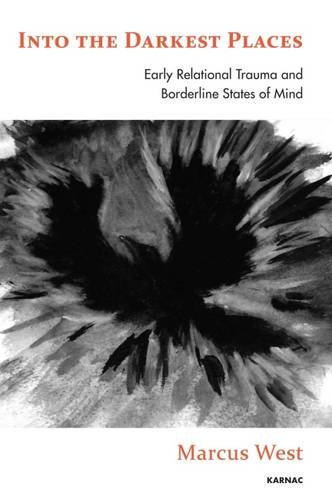From the Brink: Experiences of the Void from a Depth Psychology Perspective

Book Details
- Publisher : Routledge
- Published : 2007
- Cover : Paperback
- Pages : 322
- Category :
Jung and Analytical Psychology - Category 2 :
Clinical Psychology - Catalogue No : 25347
- ISBN 13 : 9781855754447
- ISBN 10 : 1855754444
Our Customers Average Rating
Read all reviews (1)





A commonly encountered experience of both analyst and analysand is that of the void. It is spoken about at different stages of therapy and refers to experiences that have different origins. Sometimes the experience of the void is around a relatively limited aspect of the psyche but at other times the void seems much more global and threatens to engulf the entire personality; the whole individual psyche then seems threatened by the possibility of dissolution into nothingness.
The void experience may result from the early failure of external objects to meet the needs of the developing ego, which leads to the sorts of primitive terrors that Winnicott described, or it may result when the Self itself seems threatened with annihilation, which may be more to do with a rupturing of the ego-Self axis. In the first case the fear is of disintegration, whereas in the second the experience is one of the living dead, as though the individual is cut off from her life source. But more than that, the intrusion of the void into the conscious experience of so many of us implies that its occurrence is not only the result of severe trauma but also a necessary aspect of the individuation process.
Drawing on the writings of Jung and post-Jungians, and Psychoanalytic thinkers such as Bion, Winnicott and Bick, as well as on poetry, mythology and art, and illustrating these ideas with dreams and other material drawn from his practice, the author here attempts to illuminate some of the compartments of that immense space.
Reviews and Endorsements
'Paul Ashton's work on the Void is a first and profound effort to make conscious the void, emptiness, or nothing, that precedes all conscious image and form as their originary source. His approach is Jungian but in it he relates the experience of the void to mystical experience and to dimensions of the psyche to which Jung points in his appreciation of apophatic mystics, but which he never formally elaborates in his corpus. Ashton's work points to a dimension of psyche which precedes the archetypal into which the ego dies in cyclical and never ending processes of bringing its wealth to conscious birth as the foundational task of historical humanity, individual and collective.'
- John Dourley, Jungian Analyst, Author and Theologian, Ottawa, Canada
'Paul Ashton's exploration of the human experience of the Nothing is a courageous undertaking. The Brink of the Void is encountered not only in response to primitive terror or severe trauma, but also as an almost inevitable aspect of the refining fire of the Individuation process. Ashton is informed about this experience by a broad canvas drawn from mythology, literature, art, music, religion, spirituality and film. He has found words and images for that mute state of existential abandonment. His clinical experience and wisdom are apparent.'
- Joy Jobson, Jungian Analyst and Clinical Social Worker, Cape Town
'It is very good, and an interesting topic that is not often written about. .... [the] scope of the book is very broad. He [Paul Ashton] exemplifies the best Jungian thought that is both clinically grounded and also has a mythological and imaginal sensibility.'
- Spring Journal and Books, New Orleans
About the Author(s)
Paul Ashton is a psychiatrist and Jungian analyst living in Cape Town. He is a father of three daughters and has two granddaughters. Having completed a circumnavigation in a self-built yacht he has now developed a passion for the mountains and bush (flora and fauna) of Southern Africa; a passion he shares with his wife Helise. He has published review articles on books by Lyn Cowan and Rose-Emily Rothenberg and delivered lectures on 'Medea and Filicide', the sculptors 'Hepworth and Moore' and 'The Art of the Void'. He has a deep interest in literature, art and music.
Customer Reviews
Our customers have given this title an average rating of 5 out of 5 from 1 review(s), add your own review for this title.
M Blackie on 04/12/2007




 (5 out of 5)
(5 out of 5)
This is an incredibly daring endevour to map the place that engenders so much fear - the void. The book encourages us to open our eyes in that empty darkness, instead of retreating to the place where with closed eyes we wish away that overwhelming night, for it seems to be that it is this courageous awareness that will allow us to exit that dark place, filled with more - more of ourselves, more than we entered with.
Read this book - and then read it again.
You may also like
Into the Darkest Places: Early Relational Trauma and Borderline States of Mind
Marcus West
Price £36.99







